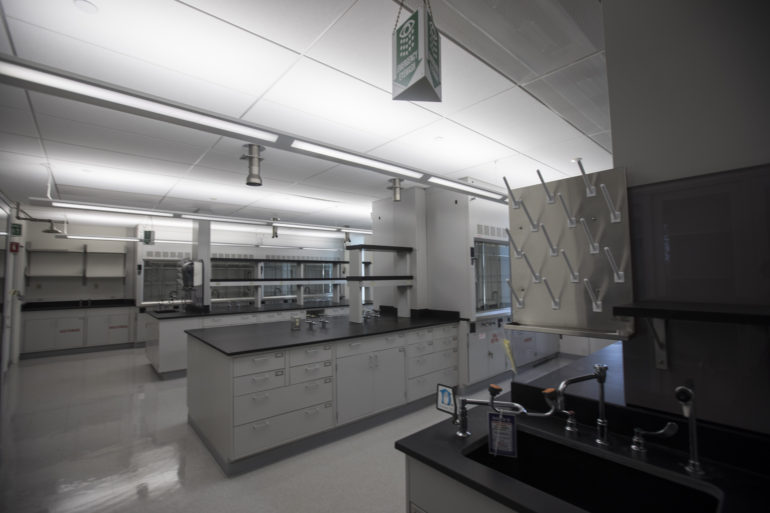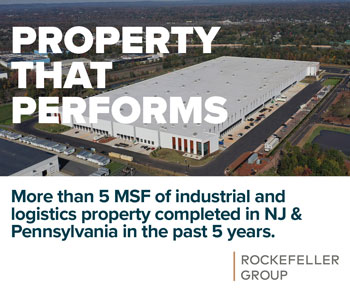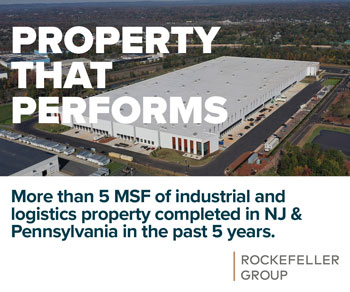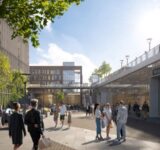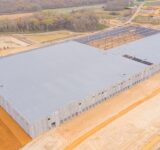Building 102 at the former Roche campus includes state-of-the-art, unused research and development space, which has attracted interest from several companies. — Photo by Jennifer Brown for Real Estate NJ
By Joshua Burd
The planned Seton Hall-Hackensack Meridian School of Medicine is undoubtedly driving much of the interest at the former Roche campus. But it’s certainly not the only attraction.
Look no further than the five-story, 176,000-square-foot R&D building at the northern edge of the campus known as Building 102. The space has never been used, given that Roche completed a rebuild of the facility in 2012 only months before announcing it would shutter the complex.
It’s essentially turnkey space that would cost hundreds of millions of dollars to build from scratch. Not to mention the value for a company coming across the Hudson River: Diaz said the firm is speaking to biomedical research firms about the lab space, including one currently located in New York City that would stand to triple its space while paying 75 percent less in rent.
RELATED: Prism, local officials prepare for ‘next chapter’ of iconic Roche campus
“Quite simply, it’s the old story,” Diaz said. “We’re providing a super high-quality real estate product that you haven’t had access to because it was all Roche. It was all built by leading pharmaceutical companies, so they overbuild, they overspend and they left us with incredible product.
“They did the right thing when they left the state. Not the right thing by leaving the state, but they did the right thing when they left, in terms of their commitment to the campus, running an appropriate campus, working with the municipalities and doing the remediation and the cleanup in the fashion and speed that they’re doing it.”
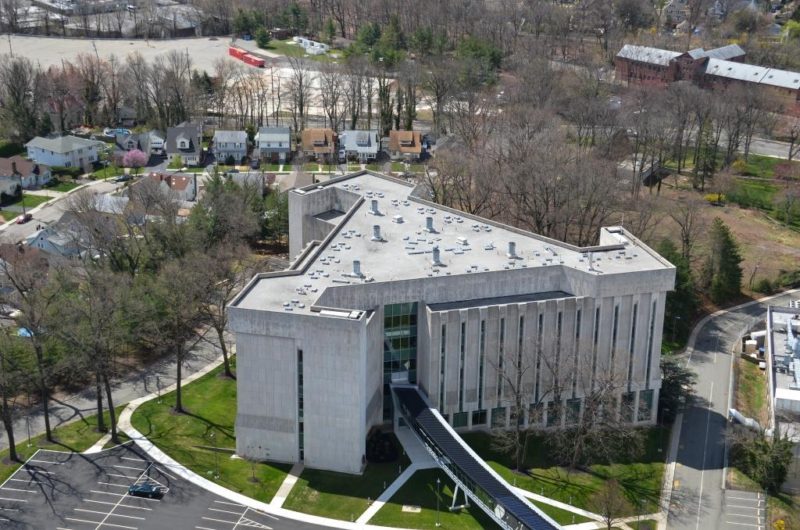
Among the other buildings left behind by the Swiss drug maker is an on-site central utility plant with 10-megawatt cogeneration capacity. What that means is that Prism can offer the campus as a having “multi-redundant” heat, cooling and electricity, with the ability to generate and create power on the property.
It would be the equivalent of each user building two HVAC systems and two electrical systems, Diaz said, noting that the costs would be prohibitive.
“It’s a global world and they need to be operating in 24/7 timeframes,” Diaz said. “They can’t be shut down by a Sandy, they can’t be shut down by a grid interruption, so all of the things that are here enable them to operate 24/7, whether they’re in one of the existing buildings or they’re going to build their own building here and tie into the systems.”

